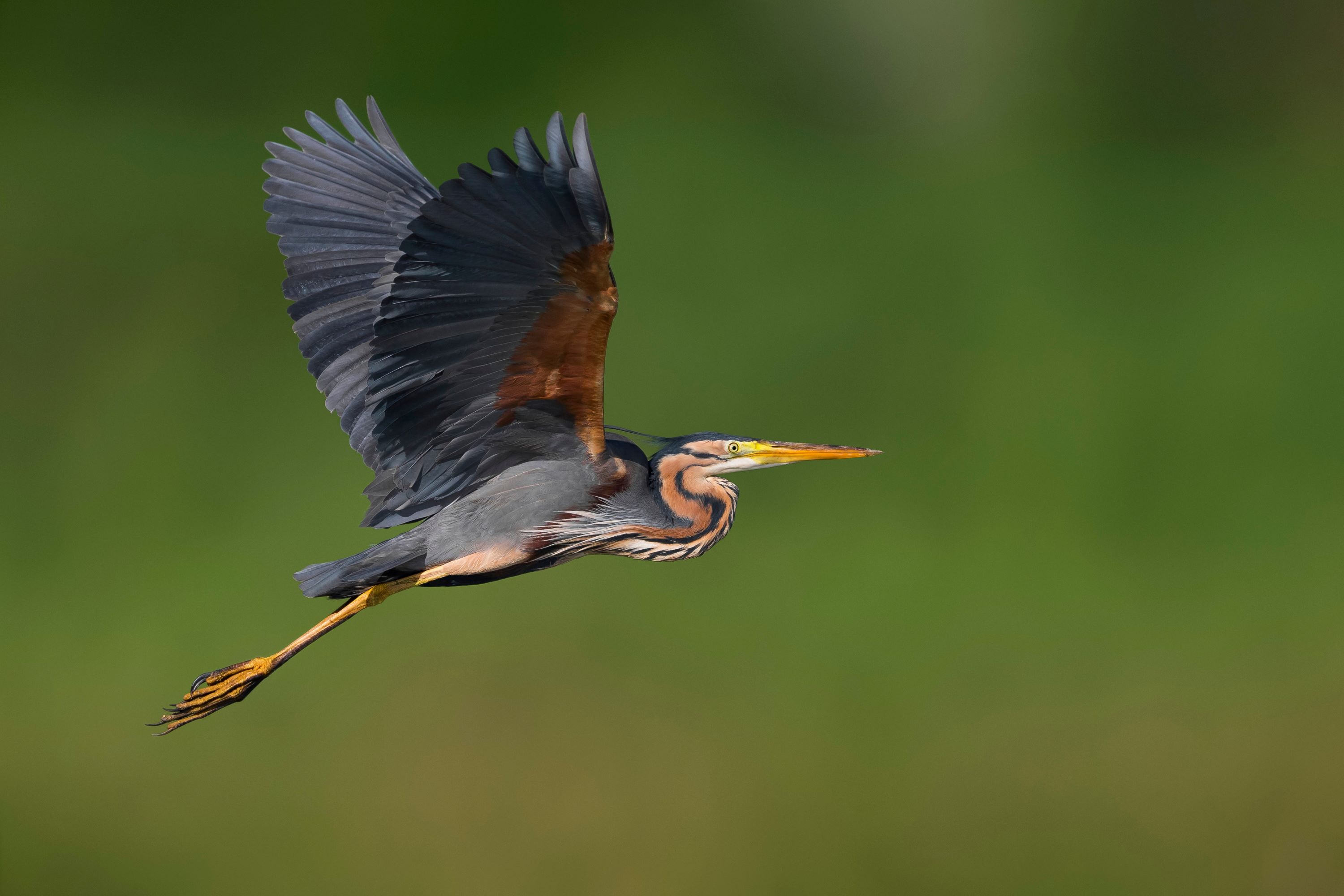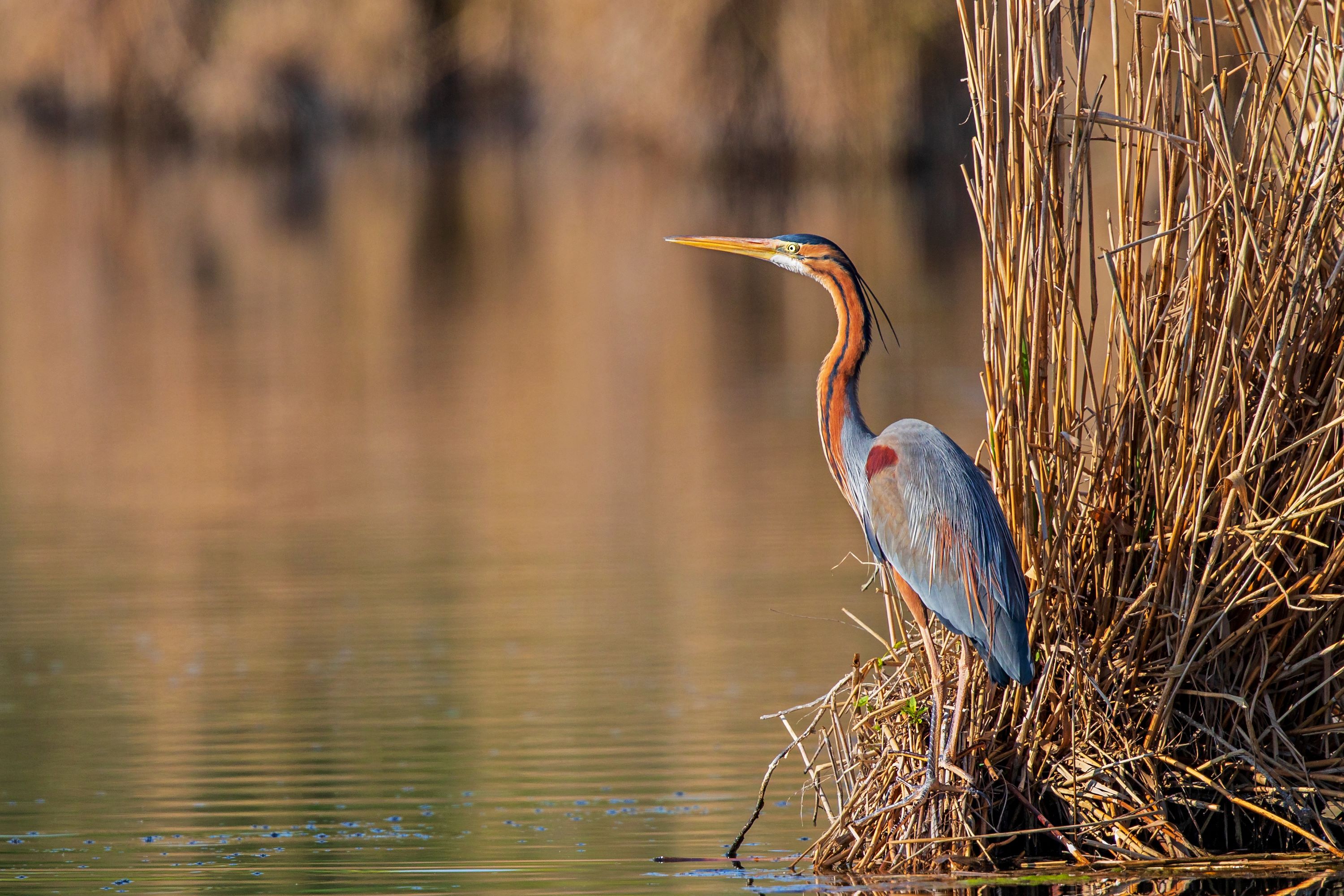
Purple Heron: The Majestic and Elusive Marshland Bird
Introduction to the Purple Heron
The Purple Heron, Ardea purpurea, is a striking and elegant bird belonging to the heron family, Ardeidae. Renowned for its richly colored plumage and secretive nature, this heron is a captivating sight for bird enthusiasts, often found skulking in the dense reed beds of marshlands and wetlands.
Physical Description
The Purple Heron stands out with its unique purple-gray plumage, a long and slender neck, and an elongated body. It measures about 70 to 90 cm in length with a wingspan of approximately 120 to 150 cm. The bird exhibits a distinctive black stripe running over its head, a long, pointed bill, and reddish-brown feathers that add to its striking appearance.
Habitat and Distribution
This heron species is widely distributed across Europe, Asia, and Africa. It inhabits a range of wetland environments, including marshes, swamps, lakes, and rivers. The Purple Heron prefers areas with dense vegetation, which provides cover for nesting and foraging.

Behavior and Lifestyle
The Purple Heron is known for its elusive behavior, often remaining hidden within the vegetation of its habitat. It is most active during dawn and dusk, feeding and moving silently through the wetlands. Despite its large size, the bird is remarkably adept at moving through dense reeds and undergrowth.
Feeding Habits
Its diet primarily consists of fish, amphibians, small mammals, and insects. The Purple Heron uses a patient hunting strategy, often standing motionless or walking slowly to catch its prey unawares.
Breeding and Nesting Habits
During the breeding season, Purple Herons form colonies, often in mixed groups with other heron species. They build large nests in reed beds or trees close to water. The nests are made from sticks and reeds and are often reused in subsequent years.
Egg Laying and Incubation
The female lays 4 to 5 pale blue-green eggs. Both parents share the duty of incubating the eggs, which hatch after about 25 to 30 days. The high nesting sites help protect the eggs from ground predators.
Chick Rearing and Parental Care
The chicks are born altricial and rely on their parents for food. Both parents feed the chicks by regurgitation. The young herons fledge the nest at around 7 to 8 weeks of age but may continue to rely on the parents for food for some time.
Vocalizations and Communication
The Purple Heron is relatively quiet but makes a variety of sounds, especially during the breeding season. These include guttural croaks and soft calls used for communication within the colony.
Conservation Status
The Purple Heron is currently listed as Least Concern by the IUCN. However, it faces threats from habitat destruction, particularly in wetlands, and from pollution. Conservation efforts for these birds include habitat protection and pollution control.
Similar Species and Taxonomy
Part of the order Pelecaniformes, the Purple Heron is often compared to the Grey Heron (Ardea cinerea) but can be distinguished by its darker plumage and more slender build. It shares its wetland habitat with other Ardeidae members but is notable for its unique coloration and elusive behavior.
The Purple Heron in Utah
The Purple Heron is not typically found in Utah or North America, as its native range is in Europe, Asia, and Africa. In Utah, birdwatchers can observe other heron species, such as the Great Blue Heron, in suitable wetland habitats.
Conclusion
The Purple Heron, Ardea purpurea, is an alluring and mysterious bird, embodying the beauty and complexity of wetland ecosystems. Its presence in diverse habitats across three continents highlights the importance of conserving these environments. Observing the Purple Heron offers a rare insight into the secretive lives of marshland birds and underscores the need for continued efforts to protect and preserve their natural habitats.